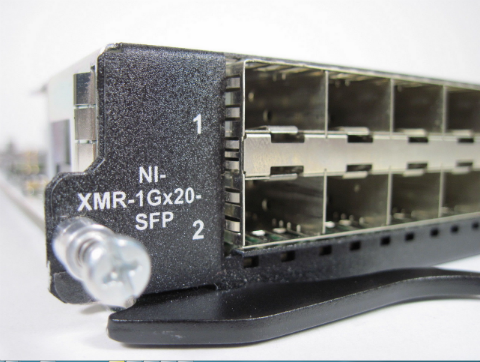Cramming the CAM on Foundry MLX and XMR Gear
With rising demands on core infrastructure, the straightforward CAM partitions (that’s Content Addressable Memory for newbs) we used to rely on have become wobbly solutions at best, and head-scratching disasters at worst. As straight IPv4 tables give way to dual stacking with VPN and MPLS provisioning (among other things), the demands on the core have made the static tables of default Foundry Direct Routing (FDR) much less viable. Brocade has been refining its partition profiles for a while, resulting in a granularity that resembles Waikiki Beach. The virtually endless options will make your routing life so much easier, as long as you get your basics straight.
First thing: These CAM profiles are only valid on the MLX and XMR gear. The NetIron CES and CER incarnations perform a different role, where the nature of FDR partitioning is perfectly acceptable. Edge routing doesn’t need to be like living on the edge. Save your tweaking for the big boys.
Next: Know your line cards. Legacy Foundry MLX cards (now known as Brocade -M versions) are going to have half the memory of Foundry XMR cards or MLX -X ones. This basically means that an NI-MLX-1Gx20-SFP (or BR-MLX-10GX20-M) on a straight IPv4 CAM partition profile will hold 512k routes, while a BR-MLX-1GFX24-X can hold about a million. Just make sure that when you create a CAM profile, the FIB on your line cards is going to handle the number of routes you need.
But this isn’t 2004, and your network isn’t just IPv4. You want partitions that reflect your network. Here are a couple of quick and dirty tables with the most popular settings to show you the differences among the platforms and profiles:
CAM Partitioning for the NetIron XMR and –X cards
|
Profile |
IPv4 |
IPv6 |
MAC/VPLS MAC |
IPv4 VPN |
IPv4 L2 ACL in |
IPv6 ACL in |
IPv4 L2 ACL out |
IPv6 ACL out |
|
IPv4 |
1M |
0 |
32k |
0 |
112k |
0 |
64k |
0 |
|
IPv6 |
64k |
240k |
32k |
0 |
16k |
24k |
16k |
12k |
|
IPv4-IPv6 |
320k |
160k |
32k |
0 |
48k |
20k |
32k |
8k |
|
MPLS-L3vpn |
128k |
0 |
32k |
480k |
64k |
0 |
64k |
0 |
|
MPLS-VPN-VPLS
|
128k |
0 |
224k |
384k |
48k |
0 |
64k |
0 |
|
Multi-Service |
256k |
32k |
192k |
256k |
48k |
4k |
48k |
4k |
CAM Partitioning for the NetIron MLX and –M cards
|
Profile |
IPv4 |
IPv6 |
MAC/VPLS MAC |
IPv4 VPN |
IPv4 L2 ACL in |
IPv6 ACL in |
IPv4 L2 ACL out |
IPv6 ACL out |
|
IPv4 |
512 |
0 |
16k |
0 |
56k |
0 |
64k |
0 |
|
IPv6 |
64k |
112k |
16k |
0 |
8k |
12k |
16k |
12k |
|
IPv4-IPv6 |
160k |
80k |
16k |
0 |
24k |
10k |
32k |
8k |
|
MPLS-L3vpn |
128k |
0 |
16k |
240k |
32k |
0 |
64k |
0 |
|
MPLS-VPN-VPLS
|
64k |
0 |
224k |
384k |
48k |
0 |
64k |
0 |
|
Multi-Service |
128k |
16k |
96k |
128k |
16k |
4k |
32k |
8k |
Can’t find what you want? Don’t worry, because the Admin Guide will provide you with more profiles than a pinochle deck. Just remember the differences among the platforms and cards, and keep in mind that tweaking system-max values can cut into the memory available for other services.
Questions? We’re on the line, waiting to talk about NetIron gear with you. Ready to ship today.

